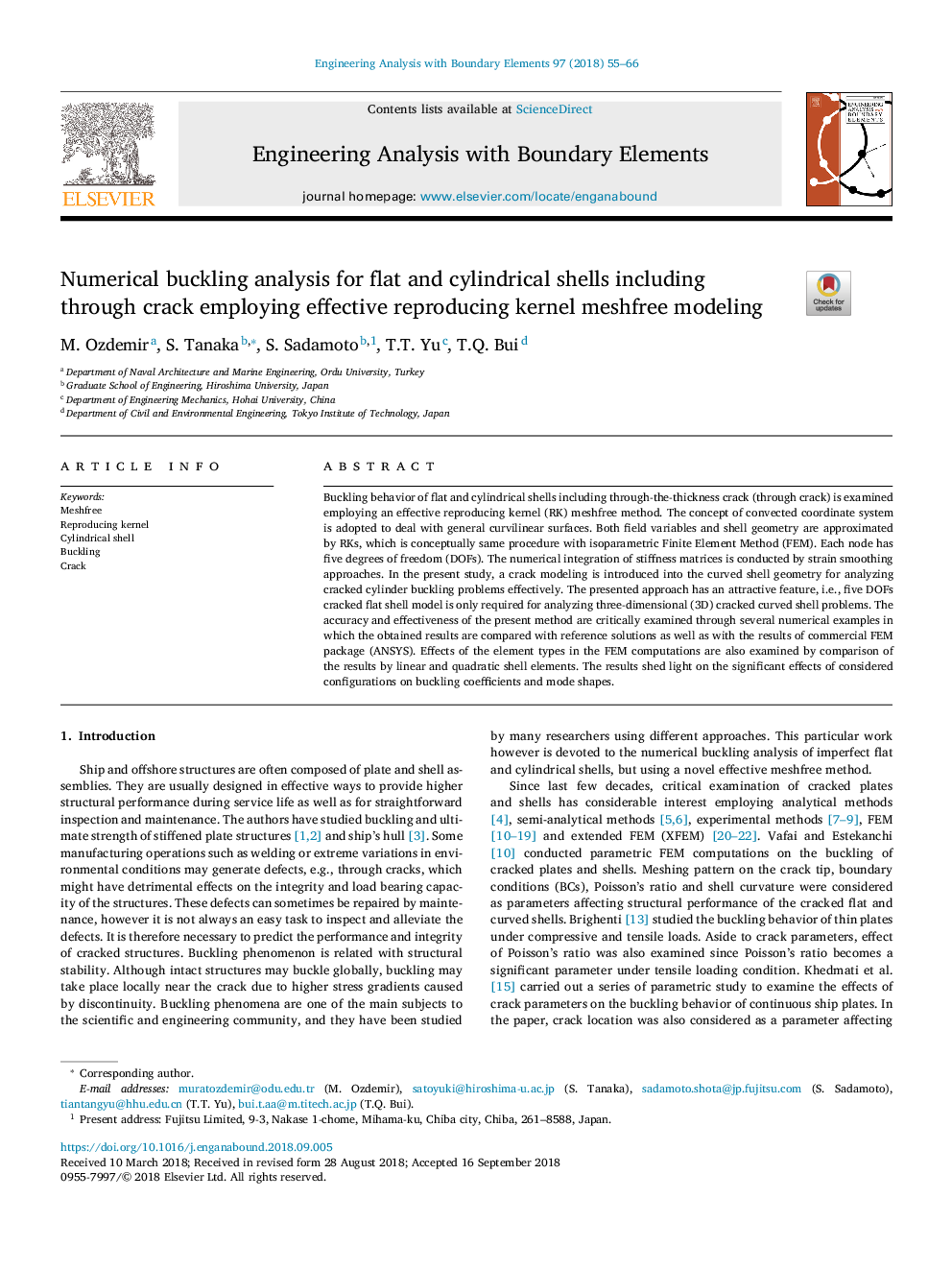| Article ID | Journal | Published Year | Pages | File Type |
|---|---|---|---|---|
| 11023919 | Engineering Analysis with Boundary Elements | 2018 | 12 Pages |
Abstract
Buckling behavior of flat and cylindrical shells including through-the-thickness crack (through crack) is examined employing an effective reproducing kernel (RK) meshfree method. The concept of convected coordinate system is adopted to deal with general curvilinear surfaces. Both field variables and shell geometry are approximated by RKs, which is conceptually same procedure with isoparametric Finite Element Method (FEM). Each node has five degrees of freedom (DOFs). The numerical integration of stiffness matrices is conducted by strain smoothing approaches. In the present study, a crack modeling is introduced into the curved shell geometry for analyzing cracked cylinder buckling problems effectively. The presented approach has an attractive feature, i.e., five DOFs cracked flat shell model is only required for analyzing three-dimensional (3D) cracked curved shell problems. The accuracy and effectiveness of the present method are critically examined through several numerical examples in which the obtained results are compared with reference solutions as well as with the results of commercial FEM package (ANSYS). Effects of the element types in the FEM computations are also examined by comparison of the results by linear and quadratic shell elements. The results shed light on the significant effects of considered configurations on buckling coefficients and mode shapes.
Related Topics
Physical Sciences and Engineering
Computer Science
Computer Science Applications
Authors
M. Ozdemir, S. Tanaka, S. Sadamoto, T.T. Yu, T.Q. Bui,
